In February I visited George Jones Farm in Ohio, which works closely with Bon Appétit Management Company at Oberlin College. The farm, constantly looking for new innovations, is doing a lot of cool stuff—including using brew waste (from beer) for compost, and using compost for hot showers! In this video, one of the George Jones farmers describes their exciting compost projects. ~Posted by Carolina Fojo, East Coast Fellow for Bon Appétit Mgmt. Co.
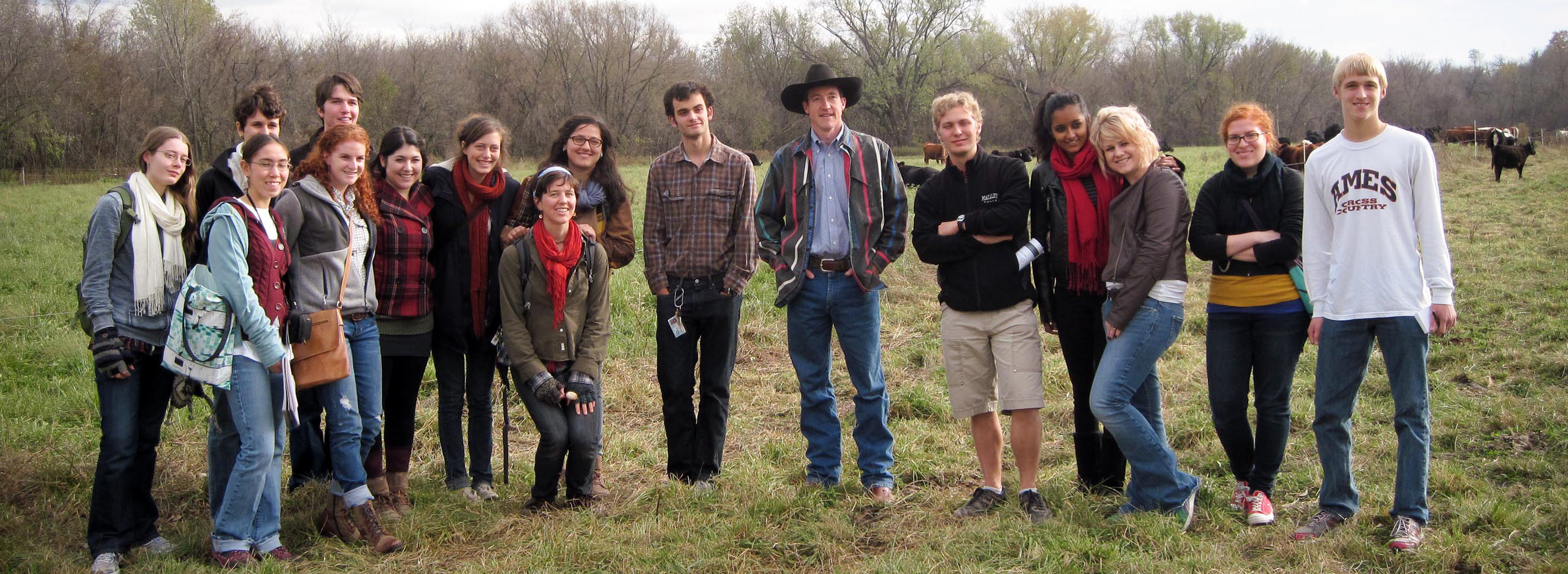
The Bon Appétit Blog
+ Blog Categories
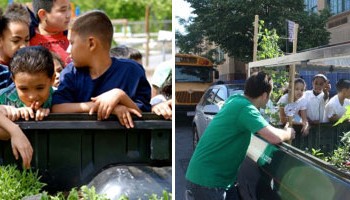
Truck Farm brings ‘fields’ of plenty to urban kids
- Blog
True or false: Eggs come from eggplants.Vegetables are grown in dirt. You may laugh at such seemingly obvious statements, but as we learn in Helene York’s latest Atlantic Food post, to many kids the answers aren’t so clear. Enter Ian Cheney and Curt Ellis of King Corn fame, who are on an inspiring mission to educate urban kids about where their food comes from with their Truck Farm (on wheels!) Read her full post at The Atlantic.
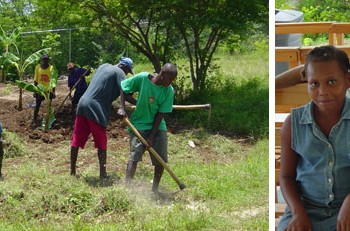
Planting a sustainable future for Haiti: update #3 from David Lachance
- Blog
From left: Work progresses on the garden; David and Meekail In his third post from Haiti, David updates us on the garden’s progress – no small feat considering he’s still without a tiller! David’s work extends far beyond the garden. Thanks to both his dedication, and support from community members back home, several children will receive medical care, and new desks for students at the tent city school were purchased.Good evening everyone, I hope this finds you well! Week 3 has begun and we’ve accomplished many of our goals. The road is scheduled to be finished by next Tuesday. The rock/stones are the challenge as they require all 10 of our guys to slowly haul them around. We’ll place the bags that were purchased with sea sand over these rocks for a smooth ride. It was funny, we laid about […]

Planting a sustainable future for Haiti: update #2 from David Lachance
- Blog
Clockwise from top right: David's motorcycle, which he rides through four-feet deep streams(!); a young girl who needs surgery for polydactyly; David and his team are rebuilding an access road to Visitation Clinic Bon Appétit Management Company team member David Lachance is spending two months in Haiti building a sustainable garden to nourish the local community in Petite Riviere de Nippes, a small rural village four hours outside of Port-au-Prince. Even with severe weather – and still without his tiller – David and his team of local Haitians are making progress on the garden. Read his full update below. The mission has changed…temporarily. The tiller has not passed through customs and there seems to be confusion about what stage it’s in…it was shipped 6 weeks ago and I’m only now starting to see the pace that things work here in […]

Bon Appétit team member planting a sustainable future for Haiti
- Blog
Left: David has been staying at this ‘tent city’ in Port-au-Prince; Right: David and his newly-hired gardeners take a break from planting an herb garden. While quake-ravaged Haiti may no longer make the front page of the newspaper every day, there’s no forgetting the acute and long-term damage wrought by January 12’s massive earthquake. Bon Appétit team member David Lachance sure hasn’t forgotten. For two months this summer, he is planting a sustainable garden on the grounds of Visitation Hospital in Petite Riviere de Nippes, a small rural village roughly four hours from the Haitian capital of Port-au-Prince. Working with local Haitians, David hopes to “develop, educate, document and nurture this project so that it can be a lasting benefit to the clinic and local people.”
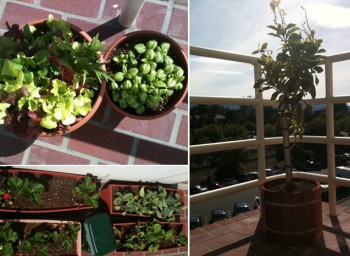
Behold the BAMCO headquarters balcony garden!
- Blog
Scenes from the fledgling BAMCO balcony garden, clockwise from top left: mixed lettuces and basil; our adopted kalamansi lime tree; strawberries, rainbow chard and heirloom collard greens We’re proud that so many of our accounts have bountiful onsite gardens that supply fresh produce to our cafés. In fact, the New York Times recently recognized our company’s sponsorship of gardens on corporate campuses. Guests at many of our corporate cafés can enjoy fresh Brussels sprouts and blueberries in the café, but this hasn’t been the case at BAMCO headquarters in Palo Alto, CA. Until now. Well soon, anyway.
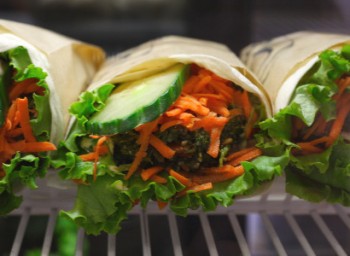
In praise of vegetables – and not of the “veggie” option!
- Blog
In our food culture, why is 'vegetarian' often defined as the absence of meat? And why are vegetables often relegated only to meat-free dishes? At the Atlantic Food Channel, BAMCO's Helene York questions our culture's resistance to celebrating vegetables as valid ingredients in their own right, and dreams of a world in which vegetables are the deliciously described option on the menu for both children and adults. Reintroducing our menus and palates to the wide variety of vegetables could go a long way, she argues, towards better public health, a more sustainable food system and increased culinary pleasure. Read the full post here.
Wash U’s Camp Kumquat gives kids an early environmental education…on the farm!
- Blog
Student run gardens and farms, such as Washington University in St. Louis’ Burning Kumquat, have gained a tremendous amount of popularity in recent years. Last summer, to a lucky group of St. Louis kids, the Burning Kumquat was known as Camp Kumquat, a three week, free of charge camp that provided a “crash course in farming and environmental education”. The two noble and motivated Wash U students who created Camp Kumquat demonstrated that student run gardens can be used to not only benefit those on campus but to educate the surrounding community about sustainability and healthy eating, while enabling everyone involved to have a great time. Campers learned to garden, cook their own meals, and reconnect with the way in which their food was grown. Bon Appétit at Wash U was so impressed by Camp Kumquat’s mission that they asked […]
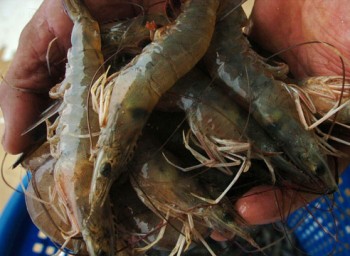
Fedele takes stock of post-oil spill fisheries on CNN.com
- Blog
For our company, serving sustainable seafood – specifically, seafood purchased in accordance with the Monterey Bay Aquarium's Seafood Watch Guidelines – is a kitchen principle. Many consumers now carry Seafood Watch Pocket Guides to help them make sustainable seafood choices both at the market and at restaurants. The recent oil spill is a poignant reminder for us all to reflect on, and possibly improve upon, our commitment to sustainable seafood. On CNN.com, BAMCO CEO Fedele Bauccio discusses the harmful activities facing global fisheries. While overfishing and the problems facing our oceans can at first be complex, Fedele offers simple steps for consumers who love to eat fish, and speaks optimistically about potential solutions: There are indeed solutions, which include changing how and what we eat from the ocean. Important institutions and thought leaders are working to raise awareness about sustainable […]
A Tribute to Bon Appétit Chefs
- Blog
As the East Coast Fellow for Bon Appétit Management Company, I spent this past semester traveling to colleges and talking to different people about food sustainability. On the way, I met many of the people who actually imagine and create the food that we eat–our chefs. So here's a little tribute to them. Enjoy! ~Posted by Carolina Fojo, East Coast Fellow for Bon Appétit Mgmt. Co.